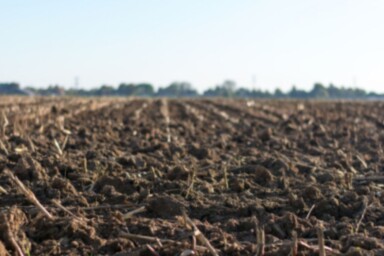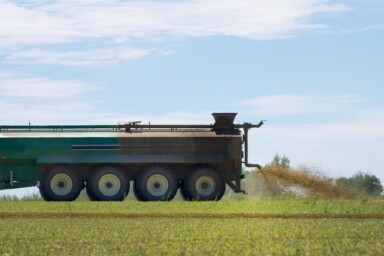For the most part, thus far, carbon offsetting schemes have focused on tree-planting. Tracts of new forestry has been created on the back of funding from companies looking to mitigate their greenhouse gas emissions. Plant a tree and store ‘x’ tonnes of carbon – it’s a simplicity that appeals to many businesses looking for a quick solution.
Globally, the soil carbon store is estimated to be 2.3 times greater than the carbon in atmospheric CO2 and 3.5 times greater than the carbon in all living terrestrial plants. Trees aren’t the only way to store carbon; in fact, soil is a critical carbon store as well.
Within soil carbon, grassland soils are a major store and hold about 34% of the global terrestrial carbon. However, due to the rise of industrial agriculture, many of our agricultural soils have become degraded and it is estimated that nearly 2 billion hectares of soil in the world has been designated as such. The FAO-led Global Soil Partnership reports that 75 billion tonnes of soil is eroded every year from arable lands worldwide, which equates to an estimated financial loss of $400 billion per year.
So, if we are to create a market mechanism to sequester carbon, it makes sense to develop a mechanism to fund soil carbon storage and help restore agricultural soils to health.
There are schemes that are beginning to do this. CommodiCarbon is a CO2e certification scheme in the UK. It quantifies soil carbon sequestration specifically, and measures CO2e reductions based upon guidelines set out by the IPCC (Intergovernmental Panel on Climate Change). The company works closely with Gentle Farming to advise and guide on land management techniques to sequester carbon. CommodiCarbon also allow for price segmentation as well as managing multiple listings and sales. This scheme operates on a yearly basis, as opposed to other carbon schemes that operate on a longer-term 5 or 10-year contract, which incentivises constant improvement, encouraging the sellers to improve management practices year-on-year to generate higher income from offsetting. It also puts the farmer in control as the farmer (or land manager) can determine the price of their listings and then accept bids.
However, CommodiCarbon is a private company, and many are wondering if the UK Government will get involved and create a public offsetting scheme for grassland soils. The UK Government has been active in promoting a ‘public money for public goods’ model within its new agriculture policy. They even included ‘protecting or improving the quality of soil’ within the stated list of goods within the Agriculture Act, alongside clean water and clean air. This will mean that the UK Government should be funding soil carbon sequestration within the new farming subsidy scheme. Simultaneously, in the development of the new farming scheme, the Government has also been increasing its environmental credentials, and highlighting the need for climate financing. In fact, Prime Minister Johnson even tasked Mark Carney, the former Head of the Bank of England, to develop better financial mechanisms to support delivery of the Government’s net zero targets. So, could a public scheme to support soil carbon offsetting be on the cards? Or does the Conservative ideology of small government and valuing private enterprise mean that they will leave soil carbon offsetting outside of the public domain, allowing private companies to control its mechanisms? Could leaving it outside of the sphere of Government mean that private offsetting schemes would lack the necessary transparency and lead to rogue actors promising the world, without adequate integrity?
However, while a right-wing, market-based ideology might dominate thinking in the UK, the political dynamics are different in the US. As a Democrat who has styled himself on FDR, President Biden is more supportive of big government programmes. Biden is keen to portray himself as a climate leader, unlike the previous occupant of the White House. As a result, there has been growing support for the creation of soil carbon funding through the Growing Climate Solutions Act that would pay farmers to deliver soil carbon gains to offset emissions elsewhere in the economy. This scheme has been developed in conjunction with Agriculture Secretary Vilsack, who is a leading supporter. The primary focus of the Bill is to create more routes for farmers to participate in carbon markets by:
- Directing the USDA to identify and highlight which practices reduce net greenhouse gas emissions or sequester carbon, and how farmers should measure outcomes against a baseline;
- Requiring the creation of a certification process for third-party experts to help farmers verify the credits they generate;
- Creating a farmer advisory board to work with the USDA to help ensure that carbon markets deliver financial value to farmers — not just buyers and intermediaries.
That isn’t to say that the new US scheme is without criticism. ‘If farms are small or have more diverse operations that bring in other benefits around biodiversity and water, but not narrowly only about carbon, they’re closed out,’ says Ben Lilliston, Director of Rural Strategies and Climate Change at the Institute for Agriculture and Trade Policy (IATP), which has published a report on carbon markets. Food and Water Watch has similarly been briefing against the Act and published a sign-on letter in April 2021 against the proposition.
What is clear on both sides of the Atlantic is that there is growing momentum to recognise the potential of agricultural soils to be a climate solution. By managing soil to store higher levels of carbon, farmers and land managers can play a critical role in achieving net zero. To make this viable from a farm livelihood-perspective, there needs to be financial incentives at scale that pay farmers to sequester carbon. Whether you agree with the philosophy of a government-backed offsetting scheme or not, the reality is that offsetting (in all forms) will dominate the climate financing world for the foreseeable future. By including soil carbon into offsetting mechanisms, farmers will have another lucrative income stream and businesses will be able to balance their emissions. As a result, our planet will be a healthier place. It is now about designing a scheme that works with integrity, respects taxpayer priorities and benefits all farmers (small or large) fairly.







